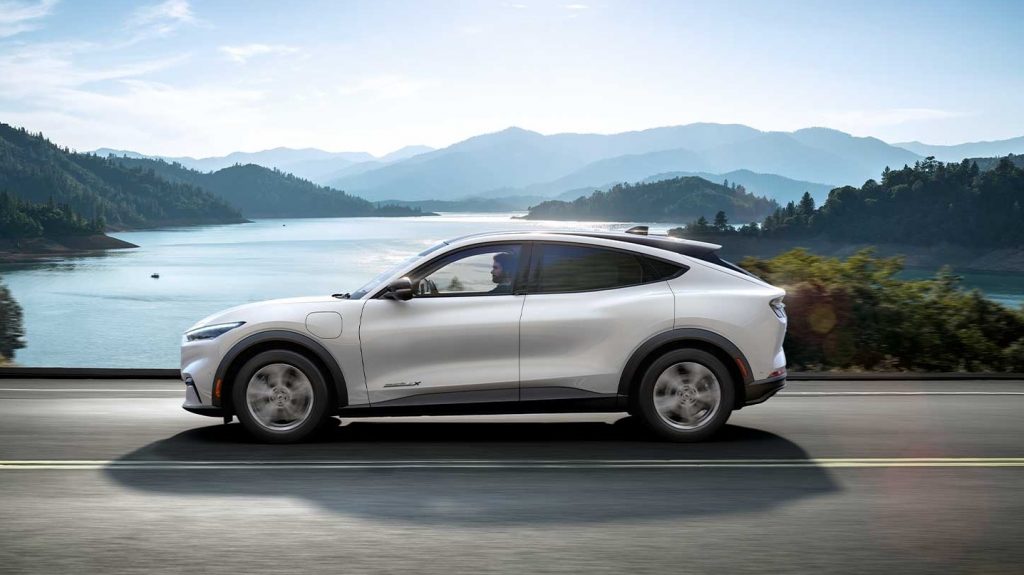How the Future of EVs Will Affect Business

In 2017 there were just 17,000 electric vehicles on the world’s roads. By 2019 there were 7.2 million! The Tesla Model 3 alone accounted for 47% of all new U.S. EV sales in 2019.
Deloitte predicts that battery-electric vehicles will account for 81% or 25.3 million of all new cars sold globally by 2030. They expect the U.S. to hold 14% of that market. (China dominates the market with nearly half of all electric automobiles sold.)
Growth of the U.S. EV market pulled back in the second half of 2019 when fuel prices fell. Then COVID hit in 2020. Businesses and schools closed, employees lost their jobs or worked from home, and transportation became less of a priority.
EV sales dropped, but automobile manufacturers took advantage of the down time to focus their efforts on research and development. As a result, American manufacturers rolled out an unprecedented number of new, enhanced EV models in 2021. From Jaguars and Minis to Volvos and Volkswagens, today’s drivers may choose from electric coupes, sedans, SUVs and pick-up trucks.
At the same time, increasingly excessive weather patterns and other changes around the globe started shifting consumer attitudes toward EVs. Buyers, once put off by the high purchase price, can find notable savings through utility rebates, government incentives, and lower fuel and maintenance costs. These days the overall cost of EV ownership is almost the same as internal combustion engine vehicles. Specific mandates—such as California’s ruling that all new cars sold in that state will be electric by 2035—will also increase sales. The current rise in fuel prices may spur more converts.

The 2021 Ford Mustang Mach-E offers the practicality of an SUV and a driving range up to 305 miles. With 266+ horsepower, it’s a performance car that goes from 0-60 mph in 3.5 seconds. It is eligible for a $7,500 federal tax credit.
EV 101
Before we get too far, here’s a basic guide to EVs. They are generally divided into two categories:
- BEV: Battery-electric vehicles are 100% powered by an electric engine running on rechargeable batteries. These cars produce zero emissions but cannot run great distances without access to electricity. Within BEVs, older cars tend to be short range battery EVs (srBEV), and newer cars are long range battery EV (lrBEV).
- PHEV: Plug-in hybrid electric vehicles have a double power system. One system runs on rechargeable batteries that are charged when plugged into an electric charging station. The second system is a back-up gasoline engine that provides additional range when no charging station can be found. This car only produces emissions when running on the fossil-fuel, back-up engine.
Don’t forget that the EV market goes beyond personal vehicles. There are corporate and government fleets, vans, public busses, light rail, garbage and utility trucks. The more people see and experience electric transportation, the more comfortable they feel about using and owning their own EV.
Fueling Up: The Role of Business
Aside from the cost of the car, the biggest drawback for EV popularity in the U.S. is the lack of charging stations. The cars have limited ranges and therefore depend on finding a spot to “fill up.” Corporate businesses will play an important role in what is likely to be a multi-billion-dollar private and public capital investment.
As companies reduce their carbon footprints and brand themselves supporters of a cleaner environment, they will convert their fleets and usage to vehicles fueled by electricity. Government rebates targeting electric fleets will play a role in encouraging companies to make the switch. Businesses will look for suppliers and service companies to do the same.
Many businesses have added—or plan to add—charging stations to their parking options for employees, customers and their own fleets. There are many reasons to do so. Supporting the electric charging infrastructure is good for business:
- You Set a Positive Example: Installing EV charging at the workplace sends a strong message about your company’s willingness to support the environment. Charging stations can establish your company as one that cares about sustainability. This helps attract employees, customers, investors and community support. Your EV-driving employees can enjoy the perks of free or convenient charging with access to prime parking spots.
- Earn Measurable Credits: Take advantage of “smart charging” (more info on this below) to gather statistics and produce reports on carbon offsets that can earn points toward recognized sustainability metrics such as LEED certification. You can enhance corporate sustainability reporting for Scope 3 emissions when your employees opt for clean-fuel commutes. Sharing charging information with utilities helps them develop strategies to better balance renewable energy with high-emission energy generation.
The cost of installing an EV charger depends on the charging structure. There are three levels of EV charging equipment:
- A Level 1 charger is more appropriate for residential living where the driver can charge the car overnight at 120 volts to obtain a 5-mile range for each hour of charging.
- A Level 2 charger is the most common public charging station. It provides 20 miles of range for one hour of charging time at a mid-level voltage of 240.
- A Level 3 charger provides 30 miles of range per 10 minutes of DCFC (direct-current fast charging) charging time at 480+ volts.
According to a 2019 report from the Rocky Mountain Institute, a basic Level 2 commercial charger ranges from $2,500 to $4,900, but a DC fast charger can cost ten times that price. You need a transformer to tap into the grid with cabling to connect everything. In addition to all the equipment, someone has to pay for the electricity. If you want to share that cost with users, you’ll need to purchase and install a credit card reader for each charger.
Costs of installing a charging station, or a series of them, depends on your situation and the choices you make. You need to consider physical size, ease of locating, utility or power source interface, environmental aesthetics and installation costs. Accurate knowledge of your present energy budget and a detailed database of usage will help you budget and forecast future expenditures.
The Challenge for Utilities
The growth of EVs will add to electricity demand, often during peak hours. Utility providers are already dealing with the added load that comes from all the technology we use daily, and EVs present a new challenge. When several cars charge simultaneously off one transformer, the transformer goes into a form of overdrive that taxes the equipment, shortens transformer life span, causes power disruptions and adds costs. This is called charge clustering, and utilities need to protect themselves from it.
As EV usage grows, the need for demand-side management solutions will continue to rise for the utilities providing the power. Knowing that more recent models of electric cars are more evolved than models prior to 2014, Geotab Energy conducted a study on how utilities can predict current and future charging demand.
The recent swell in popularity of long-range BEVs (fully electric vehicles with a 50+ kWh battery capacity) has further increased charging demand. With a longer range, these cars are driven more and consume twice the charging energy as do cars with smaller batteries. The Geotab report states that these BEVs are “the most unpredictable and demanding class of electric vehicle from a utility perspective, and account for 66% of new EV sales in the U.S.”
Smart charging (also called intelligent charging) can relieve the strain on utilities. It involves a cloud-based solution that allows the EV itself to share data with the charging device which in turn shares data with the charging operator or station owner. Smart charging lets the station owner use a software interface to remotely optimize energy consumption during peak and off-peak times. Because software can be updated as needed, smart charging helps future-proof charging stations.
A smart phone app works with the EV’s dashboard analytics to understand local energy needs and usage while helping utilities predict demand and anticipate events such as charge-clustering. The resulting symbiosis between the car and the grid allows them to support each other.
Ready, Set, Go!
EV models built between 2014 and 2021 have greater travel ranges, larger batteries and require more power from the grid. As EVs get bigger, more powerful (and power-thirsty), the availability and location of charging stations will be critical.
Businesses that want to get on the leading edge of EV action should start planning now. Researchers at Wood Mackenzie expect workplace charging to be at the center of the charging infrastructure with 500,000 workplace charging stations in place by 2022 and more than 1.25 million commercial charging stations at workplaces by 2025. As always, Cost Control Associates is here to help you gauge and predict your current and future electricity costs. We can also help with procuring energy supply and manage risk as you move forward. You can count on us to be your energy experts.
If you enjoyed this article, you may also want to read:
How An Energy Consultant Cuts Your Business Spend
Why Businesses Measure Greenhouse Gas Emissions
Energy Storage Heats Up Amidst Race to Reach Net Zero Goals

Brandon Sisson is vice president of energy sales at Cost Control Associates. His energy management experience includes regulated rate review, strategic energy sourcing, utility bill processing and demand-side energy efficiency/sustainability initiatives. Brandon has assisted Global 1000 customers with energy spend optimization across a broad spectrum of industries. Prior to joining Cost Control Associates, he held energy-focused leadership roles for Accenture, Insight Sourcing Group and Procurian.
